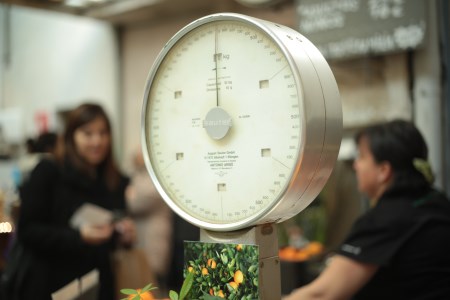Non-automatic Weighing Instruments

Directive 2014/31/EU on the non-automatic weighing instruments aims to protect against incorrect results of weighing operations where these instruments are used, to ensure the protection and safety of users, to harmonise the rules governing their sale within the EU.
Legal act:
Directive 2014/31/EU
Consolidated act:
29/03/2014 (Languages available: ES, CS, DE, EL, FR, LT, NL, RO, SK)
Scope
This Directive shall apply to all non-automatic weighing instruments that are measuring instruments serving to determine the mass of a body by using the action of gravity on that body. A weighing instrument may also serve to determine other mass-related magnitudes, quantities, parameters or characteristics.
A ‘non-automatic weighing instrument’ or ‘instrument’ consists of a weighing instrument requiring the intervention of an operator during weighing.
For the purposes of this Directive, the following categories of use of non-automatic weighing instruments shall be distinguished:
- determination of mass for commercial transactions;
- determination of mass for the calculation of a toll, tariff, tax, bonus, penalty, remuneration, indemnity or similar type of payment;
- determination of mass for the application of laws or regulations or for an expert opinion given in court proceedings;
- determination of mass in the practice of medicine for weighing patients for the purposes of monitoring, diagnosis and medical treatment;
- determination of mass for making up medicines on prescription in a pharmacy and determination of mass in analyses carried out in medical and pharmaceutical laboratories;
- determination of price on the basis of mass for the purposes of direct sales to the public and the making-up of prepackages;
- all applications other than those listed in points (a) to (f).
Definitions
Making available on the market means any supply of an instrument for distribution or use on the Union market in the course of a commercial activity, whether in return for payment or free of charge.
Placing on the market means the first making available of an instrument on the Union market.
Importer means any natural or legal person established within the Union who places an instrument from a third country on the Union market.
Distributor means any natural or legal person in the supply chain, other than the manufacturer or the importer, who makes an instrument available on the market.
Withdrawal means any measure aimed at preventing an instrument in the supply chain from being made available on the market.
Article 14 - EU declaration of conformity
- The EU declaration of conformity shall state that the fulfilment of the essential requirements set out in Annex I has been demonstrated.
- The EU declaration of conformity shall have the model structure set out in Annex IV, shall contain the elements specified in the relevant modules set out in Annex II and shall be continuously updated. It shall be translated into the language or languages required by the Member State in which the instrument is placed or made available on the market.
- Where an instrument is subject to more than one Union act requiring an EU declaration of conformity, a single EU declaration of conformity shall be drawn up in respect of all such Union acts. That declaration shall contain the identification of the Union acts concerned including their publication references.
- By drawing up the EU declaration of conformity, the manufacturer shall assume responsibility for the compliance of the instrument with the requirements laid down in this Directive.
Article 15 - Conformity marking
The conformity of an instrument intended to be used for the applications listed in points (a) to (f) of Article 1(2) with this Directive shall be indicated by the presence, on the instrument, of the CE marking and the supplementary metrology marking as specified in Article 16.
Article 16 - General principles of the CE marking and of the supplementary metrology marking
- The CE marking shall be subject to the general principles set out in Article 30 of Regulation (EC) No 765/2008.
- The supplementary metrology marking shall consist of the capital letter ‘M’ and the last two digits of the year of its affixing, surrounded by a rectangle. The height of the rectangle shall be equal to the height of the CE marking.
- The general principles set out in Article 30 of Regulation (EC) No 765/2008 shall apply, mutatis mutandis, to the supplementary metrology marking.
Article 17 - Rules and conditions for affixing the CE marking, the supplementary metrology marking and other markings
- The CE marking and the supplementary metrology marking shall be affixed visibly, legibly and indelibly to the instrument or to its data plate.
- The CE marking and the supplementary metrology marking shall be affixed before the instrument is placed on the market.
- The supplementary metrology marking shall immediately follow the CE marking.
- The CE marking and the supplementary metrology marking shall be followed by the identification number(s) of the notified body or bodies involved in the production control phase as set out in Annex II. The identification number of the notified body shall be affixed by the body itself or, under its instructions, by the manufacturer or his authorised representative.
- The CE marking, the supplementary metrology marking and the identification number(s) of the notified body or bodies may be followed by any other mark indicating a special risk or use.
- Member States shall build upon existing mechanisms to ensure correct application of the regime governing the CE marking and shall take appropriate action in the event of improper use of that marking.
Legal acts repealed:
Previous guidelines:
-